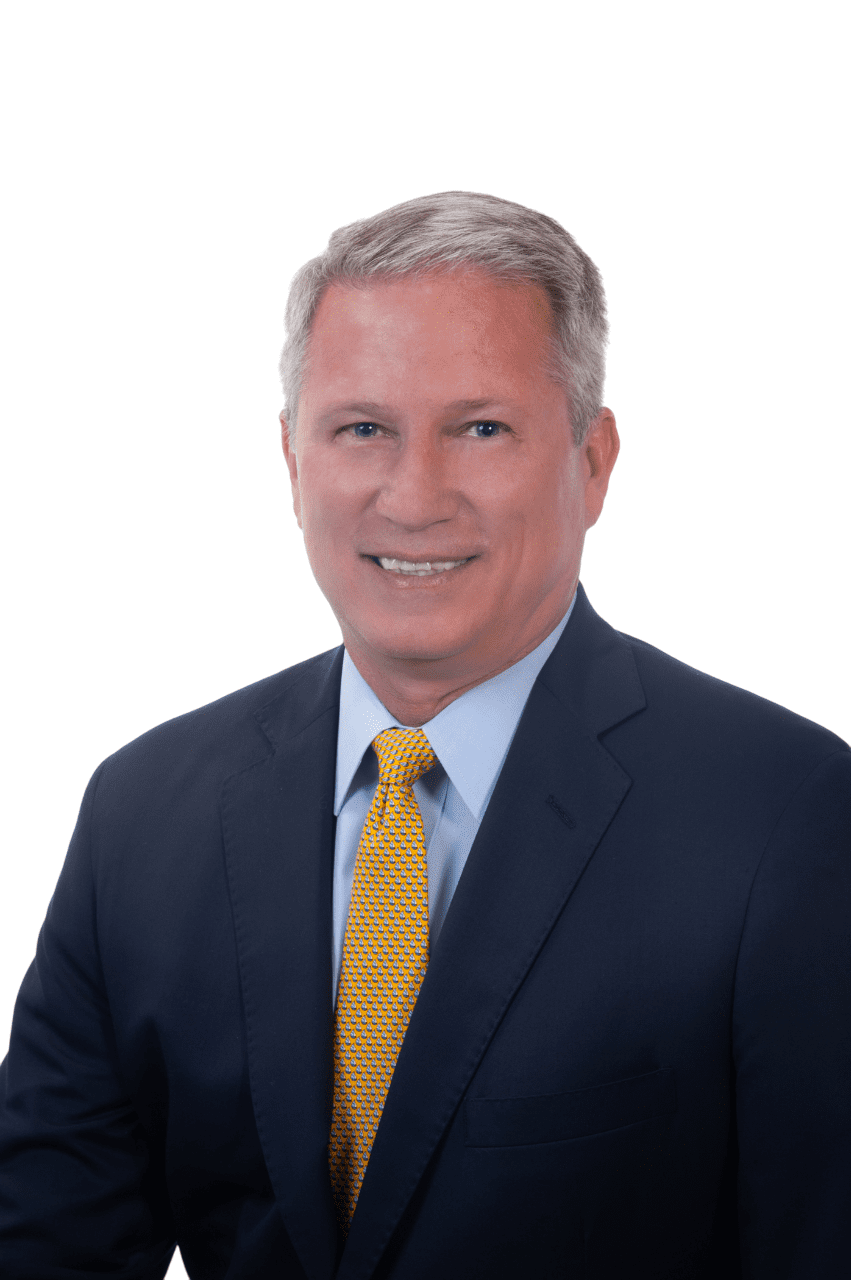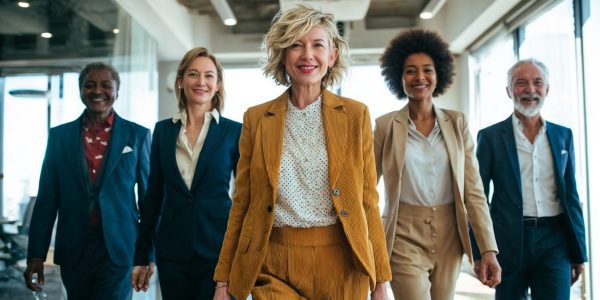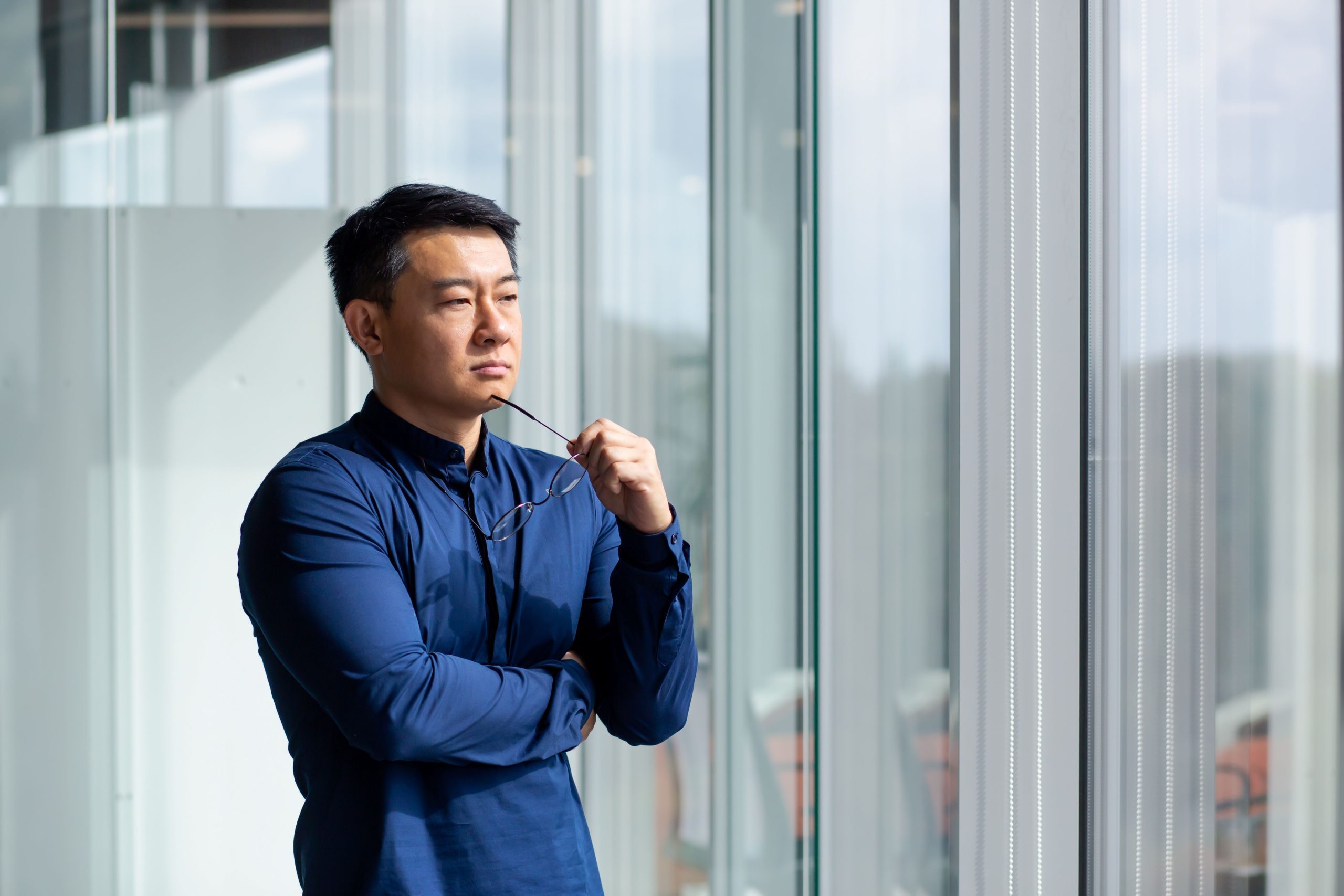Successful FINRA CAT and CAIS Reporting
Part 2, featuring Mark Hendrickson of D.A. Davidson Companies
By Mark Hendrickson, Buddy Doyle, Ralph Magee and Jeff Gearhart
Subscribe to our original industry insights
Understanding CAT and CAIS Reporting Responsibilities
Consolidated Audit Trail (CAT) trade reporting is maturing, and many firms are coming to terms with the requirements and regulatory expectations. Some firms, however, are still determining what responsibility they, their clearing firms and other CAT Reporting Agents have. Customer Account Information System (CAIS) Reporting is still going through some growing pains as firms struggle with how to identify and manage material inconsistencies, among other things.
Join us for Part 2 of our deep dive into FINRA’s Consolidated Audit Trail (CAT) and Customer and Account Information System (CAIS) reporting. This episode features our engaging conversation with Mark Hendrickson, Head of Trading Streetside Operations at D.A. Davidson, alongside Oyster Consulting’s Buddy Doyle, Jeffrey Gearhart and Ralph McGee. Together, they explore the current state of CAT CAIS reporting, industry-wide challenges, and best practices for firms to stay ahead of regulatory requirements. Key topics insclude:
- Industry Readiness and Compliance Gaps
- Trade reporting vs. CAIS: Key Differences, including struggles with defining and reporting trust accounts and beneficial owners
- Challenges in Ensuring Data Accuracy
- The Shift from Account-Centric to Customer-Centric Reporting, and the impact of these changes on compliance, audit preparation, and regulatory scrutiny.
- Managing Regulatory Inquiries and Increasing Oversight
- The Role of Third-Party Vendors in Compliance Support
This episode provides critical insights for compliance officers, trading professionals, and regulatory teams navigating the evolving CAT and CAIS landscape. Learn from industry experts about best practices, potential regulatory challenges, and strategies to optimize compliance processes while minimizing risk.
Listen to Part 1
Your Partner in Achieving CAT and CAIS Compliance
Oyster Consulting’s CAT experts help your firm meet CAT reporting requirements and get the most out of CAT reporting investments. With our support, you can reduce costs, save time, and focus on growing your business while maintaining compliance.
Our proprietary Oyster Solutions CAT reporting application consolidates all CAT reporting events, error analysis, and validation data into one central program. This powerful application helps identify errors, connections, and missing information in vendor data and CAT-reported data, making the reporting process easier and more efficient for you.
The Oyster Solutions CAIS Module lets you see CAIS reports and source data on one platform. You can use it with or without the CAT Application. Companies can achieve Full CAIS reporting with the help of a web-based tool. This tool helps them identify and correct errors in their data.
Transcript
Transcript provided by TEMI
Bob Mooney: Welcome to the Oyster Stew Podcast. I’m Bob Mooney, General Counsel for Oyster Consulting. FINRA’s Consolidated Audit Trail, or CAT, continues to evolve from account-centric trade reporting requirements to now including customer-centric CAIS reporting. Today we welcome Mark Hendrickson, Head of Trading Streetside Operations at D.A. Davidson. Join us for Part 2 of our discussion with Mark about where CAT CAIS stands today, the pain points members are facing, and what firms should be doing to manage the current and upcoming reporting requirements.
Jeff Gearhart: Let’s open it up a little bit and look at it across the industry. What’s your sense of where the industry is? Mark, you guys are very proactive. Clearly, as we’re running our platform, we’re trying to be proactive. Is it across the spectrum? People way behind, to people being proactive, or do you think the industry’s trying to keep up and get this right?
Mark Hendrickson: I think they are, and man, I think that it runs the gambit, as always. But I think for the most part, I don’t want to call CAT trade reporting mature as of yet. I don’t think it’ll be mature until long after I retire, but I think it’s to the point now where people understand, barring the open questions, we have a lot of ambiguity around quote reporting, whether it’s verbal or whether it’s electronic. We still have some lingering questions around representative orders. But I do think it’s mature in the sense that firms know what events they need to be reporting based upon the use case, whether it’s stuff that FINRA made up that doesn’t really happen in the real world; but, I think most firms know what those requirements are.
Now, I say most firms. I think we are going to see more and more fines coming out from firms, not by any nefarious activity. They just didn’t know they were drinking from a fire hose. Their CAT Reporting Agent was missing something, and they just didn’t have visibility into it. I think what firms need to focus on is that they need to be looking at this, because FINRA is not going to come in and accept a breakdown over a multi-year period. We’re in 2023 now, me trying to wave the white flag and say, “Hey, it’s not my fault when we started CAT trade reporting 2A and 2B in 2020.” If I were on the other side of the fence, I’d say, “You know what the requirements are and if you had a problem with them, you had a venue such as my role on the Advisory Committee to be able to tell us that this isn’t workable.”
And so, I don’t think we have many excuses left on the CAT trade reporting side. On the CAIS side, as we all know, that’s been quite painful. We’ve had to educate them on what a trust account is. Believe it or not, I’ve had to spend innumerable hours with the examiners explaining to them how we set up trust accounts and what our obligations are under KYC and 17A-C3. It’s been exhausting, but firms need to really pay attention to that because they’re going to be coming in and they’re going to be questioning us on what we’re reporting on the CAIS side. So, people need to really shift, if they haven’t already, to look at their CAIS reporting.
Jeff Gearhart: Yeah, and those are actually different resources. Steve Kuhs recently joined our team, and he made a very good point that account onboarding teams are different than transaction reporting teams, and they might not understand all the requirements or how they have to deal with this. So, that’s a whole new set of challenges with new resources. But I do see the point about trade reporting being mature. Buddy, Ralph, any perspective on how you think this is going to go? Who’s prepared, who isn’t?
Buddy Doyle: I think the industry has got a barbell kind of thing going on here. On one side of the firms that got prepared and got ready and have been looking at this. And now when I look at CAT, our first engagement on CAT was in 2015. I mean, that tells you how long this has been contemplated and talked about and moved now to an implementation phase. And firms like Davidson with folks like Mark, we’ve got ready, took it seriously, looked at it and said, this is a big deal for us. And they’re a larger firm. They’ve got more moving parts than maybe some other firms. But there are still firms that don’t seem quite ready for the part that took place a couple of years ago. And so, I think you’re going to see some catching up in the smaller firms. I think the introducing firms are going to learn what they can rely on their clearing firms for and what they can’t. I think they’re going to figure that out while Mark is well down the path of CAIS. And so, I think we see that across the industry where there’s some very prepared folks, some “on it” types of firms, and then there’s firms that just are really figuring it out. Ralph’s more in the weeds obviously than I am on this, but Ralph, what are your thoughts?
Ralph Magee: Yeah, I think you’ve hit on a couple of things that I would’ve already highlighted. And that is, the industry is still struggling to figure out the CAT transactional side of this. And we’ve got a huge mountain in front of us with CAIS. CAIS presents its own separate and distinct issues across the board. I think how a firm surveils that is going to be a challenge, just because of what Jeff has mentioned with the multiple departments that are involved in the understanding that may, or may not, be in those departments as to what the real issues are. But if you’re asking me what I’m concerned about the most, I think one of the things that FINRA has turned off right now is material inconsistencies. And when they turn that validation back on in April, I think it’s April 8th, 2024, industry members are going to be faced with the unknown.
They don’t know how many material inconsistencies they have against other broker-dealers that may have a mutual client across the industry. And that seems like a really short window to me to clean all of those potential rejects up. I think what a firm should certainly be focused on right now is cleaning up their own internal material inconsistencies across their own clients. And, I’m not sure where a lot of folks are on that or in the process of doing that, but that will help reduce material inconsistencies that they have across the industry itself. Mark, is that something that you’re concerned about as well in the industry? I know that we’re providing you some of those tools to clean up some of the internal inconsistencies that you may have in your own data, but what do you think this is going to look like from April 8th until March 24th? Excuse me, May 24th?
Mark Hendrickson: The years kind of blend together now, Ralph. I think that’s huge, right? And I think that that’s where firms are really struggling. We saw a lot of internal material inconsistencies, both in our own and looking at our core books and records for account information. I did get a phone call from FINRA Trade Reg asking me about birth dates, birth years. Remember, we fought against reporting the full birth date. So now we only have to report a year of birth to the CAIS, which was a big win for us. The problem with that is, I had Euro bursts of both 1900 and 1800. So, I explained to FINRA Trade Reg that D.A. Davidson has a phenomenal client wellness plan. We do have clients that have, but again, this hits at the core of what CAIS is.
And I think the main thing is how they opened up the definition of customer. We have KYC obligations to our clients, our account holders, our beneficial owners. Customers now include my brother that has a Power of Attorney on my account that is not known to Davidson other than a single Power of Attorney form. And I need his year of birth, and I need his social security number, and his address as well. We found a lot of inconsistencies, Ralph. And that’s what we’ve engaged you all in to say, with Beta reporting out the door for us, where are you seeing differences in what should be the same natural person? The TID value is unique. That’s what FINRA is hinging everything on to identify a unique legal entity or natural person across every single reporting firm. And that’s huge. What firms need to be focused on are their internal inconsistencies because, as we’ve discussed at length, FINRA made a huge system issue.
The reason the CAIS has been delayed, regardless of what anyone tells you, is that FINRA went into it and said, well, people know one John Smith. No, they don’t. If John Smith has 10 accounts at D.A. Davidson, he’s got 10 different instances of John Smith with 10 instances of his social security number and 10 instances of addresses that may or may not be the same. We are an account-centric based system, like it or not. FINRA designed the CAIS to be customer-centric. I know this because when I submitted 58,000 D.A. Davidson legal entity records, they all rejected back in October of last year. That’s not how it works. That’s why the CAIS is delayed, full stop. But if firms don’t have their own house in order, the material inconsistencies, to your point, Ralph, is going to be glaring.
The only real material inconsistencies we have is year of birth. That’s it. We got the rest of it thrown out. They wanted to compare legal names back in the day. We said you can’t do that, but I think that’s where the questions are going to come in from the examiners. I have 10 instances of John Smith. Explain why I have these different addresses. We know the answers to this and, quite simply, it’s the country song – “I’m not as good as I once was.” If I set up one John Smith account 10 years ago and he said that he was employed by another FINRA broker-dealer member firm, and I coded his account correctly, and then Merrill Lynch fired him, unless he tells me he no longer works for a FINRA broker-dealer, I still have him as being employed by another FINRA broker-dealer. I mean, that is simple as that.
And that’s related to customer types. Those are not material inconsistencies. If I report someone as an accredited investor that they told me they were accredited five years ago, and Stifel sets up John Smith on their books and records, they asked the question and whether or not he’s no longer accredited or he lied to them and said, “I’m not,” we’re going to have them coming in and questioning us. Why Stifel has, which they would never tell us, John Smith that’s not accredited. They’re going to ask to look at my account paperwork and say, okay, I asked the question, I coded him as accredited five years ago. And they’re like, okay, well he’s not accredited anymore. It’s like, okay, and you apparently think the response rate to my 36-month letter where I’m asking the question is, what? More than 9%? Come on. I’m not as good as I once was. But we’re going to have to answer all those questions and firms need to be prepared for that.
Buddy Doyle: I’m definitely looking forward to the reckoning of how FINRA is based everything on an account up until now, and now they’ve suddenly become client-centric in the platform. I do think a lot of fishing excursions by regulators could start occurring.
Mark Hendrickson: I think that’s my concern too, Buddy. And I think that’s not only at the data level. Obviously if we have 10 instances of John Smith and five of them are coded as accredited or an employee of another broker-dealer, we rely on you all to show us what those inconsistencies are. And that’s where firms really need to look at that. If they’re account-centric and not customer-centric, they need to be aware that FINRA’s going to come in and say, “Why do you have John Smith with the same social security number being reported five times with accredited and five times without?” And firms need to be prepared to answer that question – is your own house in order?
Jeff Gearhart: We could continue this discussion for hours, days, <laugh> that there’s so much here. Clearly firms need to be proactive. This is requiring diligence, new processes, new resources, additional resources there. There’s so much to focus on, but the intent of CAT and CAIS is to improve surveillance capabilities. So maybe as a way to wrap up today, knowing that we’re going to have to come back with multiple more sessions, let’s look through the crystal ball. What should we expect from FINRA and the SEC in the second half of next year, assuming this all goes live. Are we going to be overwhelmed with inquiries? Is it they will use the world’s largest database to start firing out questions? I mean, what’s life going to be like?
Mark Hendrickson: I don’t know. I’m hoping they don’t get budget for more staffing. I really <laugh> – it’s going to be more. No doubt this is going to be more, whether it’s trade reporting or whether it’s CAIS reporting. I understand why this came about. OATS was not complete. But, I think that the byproduct of this is that firms need to be prepared for those inquiries. And I think most ironically, and I’m sure other firms would confirm this. Let’s forget about Blue Sheet retirement. D.A. Davidson was just subject to two state examinations, and another SEC examination where they asked me for a trade blotter, and the dates were after June of 2020. So invariably I’m looking at this and I’m saying, “Why are you asking me for a trade blotter if you have access to the CAT data?”
And that’s where I think the industry really needs to have a strong voice in their advocacy to say, “You’re double dipping. You’re inquiring on how we’re doing our CAT reporting, and then separately you have sales practice exams that are asking us for trade blotters.” And with the advent of the CAIS – and let’s not forget the CAIS is live – this whole delay is a joke. The obligation there that occurred in December is that every firm has to report to the CAIS any CAT reportable accounts. That’s any account that had CAT reportable activity on or after June 12th, that hasn’t changed. That’s why FINRA is reaching out to firms who have not reported all the FDAs they’re seeing on the CAT trade reporting side. I see this as slowly gaining steam, and I think we’re getting a bit of a breather on the CAIS side, but I think once CAIS goes live the floodgates are going to open, as Buddy said. Those fishing expeditions are going to start. It’s only going to be a factor of how many pucky little examiners they have that just got out of a four-year finance degree that they put into an office and say, go bother Mark at D.A. Davidson for six months because he’s got time.
Jeff Gearhart: <laugh>. Okay. Real quick, have you had to increase your resources around this as it’s evolved? Are you planning to?
Mark Hendrickson: We have. We’ve done two things. We’ve taken a hit, because you guys said it before, this is not some young person in new accounts. This is someone who understands what books and records rules are, because we had to fight those battles. So, these were senior resources that had to be used. I’ve spent 80% of my time over the last five years on the CAT as one of the most senior people at Davidson from a trade reporting and, frankly, operations side. And we have had to staff for that. We’ve hired three, it’s going to be four people. That’s four new hires, brand new, and the salaries to go along with them. Not to mention the hits that we took on our own discretionary projects, what we didn’t work on over the last five years that would’ve benefited Davidson either in capturing new assets under management or cost savings through automation. All of that got thrown by the wayside. This is not, people talk about CAT fees, really talk about CAT fees. How many tens of millions of dollars have I spent in giving free consulting services to the examiners in the development of CAT? The CAT fees are minuscule. And I know some people disagree with that, like Merrill Lynch, who I know is going to shoulder a heavier burden, but that the CAT fees, we are never going to recoup from how much we’ve spent in time and treasures just helping them get this off the ground.
Buddy Doyle: So, I think you have that, and they really haven’t transitioned the industry to a new way. It’s just been, and not instead of. And I know OATS is gone, but to Mark’s point, they have this database at their fingertips. One, I’m afraid they’re going to start using it and not really know exactly what they’re doing and draw some poor conclusions. I think that’s likely the next time the market falls 9% in a couple of minutes, will they know what caused it? I think that will be an interesting question as well. That was really the whole genesis of the CAT, or maybe not the genesis of the CAT, but the rationale for approving the CAT, was the flash crash. And I think this has become an AND thing, not an OR instead of, and I think we need to kind of get the industry to continue to push for this to become a transition, not just another thing.
Mark Hendrickson: Because it’s more cost. It’s having to support these separate inquiries that we’re still getting for trade blotter information. And I understand that not all products are covered. We do understand that. But it is still an AND. There needs to be that transition. I think that’s where Davidson has continued to be a strong advocate pushing back on the SEC and even at the congressional level, because all they’re doing is adding pause to the end investor.
And that’s really a good way to look at this. But the fact is that ultimately the people that have to pay for this are the end investors. And then people tell me, well, you know, there’s institutions too. Well, who do you think the institutions’ clients are? It’s someone’s 401K that they worked their ass off to get it and they’re going to have to pay more because of the CAT. And frankly, I don’t think the cost benefit is in any way, shape or form, flash crash or otherwise, justified for how much we’re paying for this. And that’s just unfortunate.
Jeff Gearhart: I don’t know if anybody has any additional parting comments.
Ralph Magee: Mark, I just want to thank you for your time today. It has been a pleasure to spend this hour with you. And it’s been a pleasure to work with you over the past three and a half years. Look forward to doing a lot more with you in the future.
Mark Hendrickson: Ralph, I couldn’t agree more. I think the decision to partner up with you guys back even before CAT trade reporting, has paid dividends that I didn’t even anticipate. And that includes all the work you’ve done for us on the CAIS reporting side. As you know, that wasn’t really on my radar until someone asked me, and I’m like, well, I don’t know, maybe I should ask Ralph. And now we’re looking at a whole CAIS portion of the Oyster application that is from Austin, who’s heading this up from operations, can’t live without. And I think it’s ironic, too, that some of our CAT Reporting Agents, including members of FINRA CAT, have seen the Oyster CAIS application and said, Hey, what are you guys using? So, I think that’s a testament, right? It’s a testament to my intelligence on picking the right vendor – at least that’s what I tell my boss.
Buddy Doyle: And our intelligence on listening to you when you tell us what you want <laugh>.
Mark Hendrickson: Exactly, Buddy. But thank you, Ralph. It’s been painful, but it’s been nice being able to share some of that pain too.
Jeff Gearhart: Mark, Buddy, Ralph, thank you very much. This was a great discussion. We plan to be back with more, clearly. There’s a lot to talk about here, and as we learn and the industry evolves, we’ll try to keep everybody posted. So, thank you everyone.
Bob Mooney: Thanks everyone for listening. If you’d like to learn more about our experts and how Oyster can help your firm, visit our website at oysterllc.com. And if you like what you heard today, follow us on whatever platform you listen to and give us a review. Reviews make it easier for people to find us. Have a great day.







